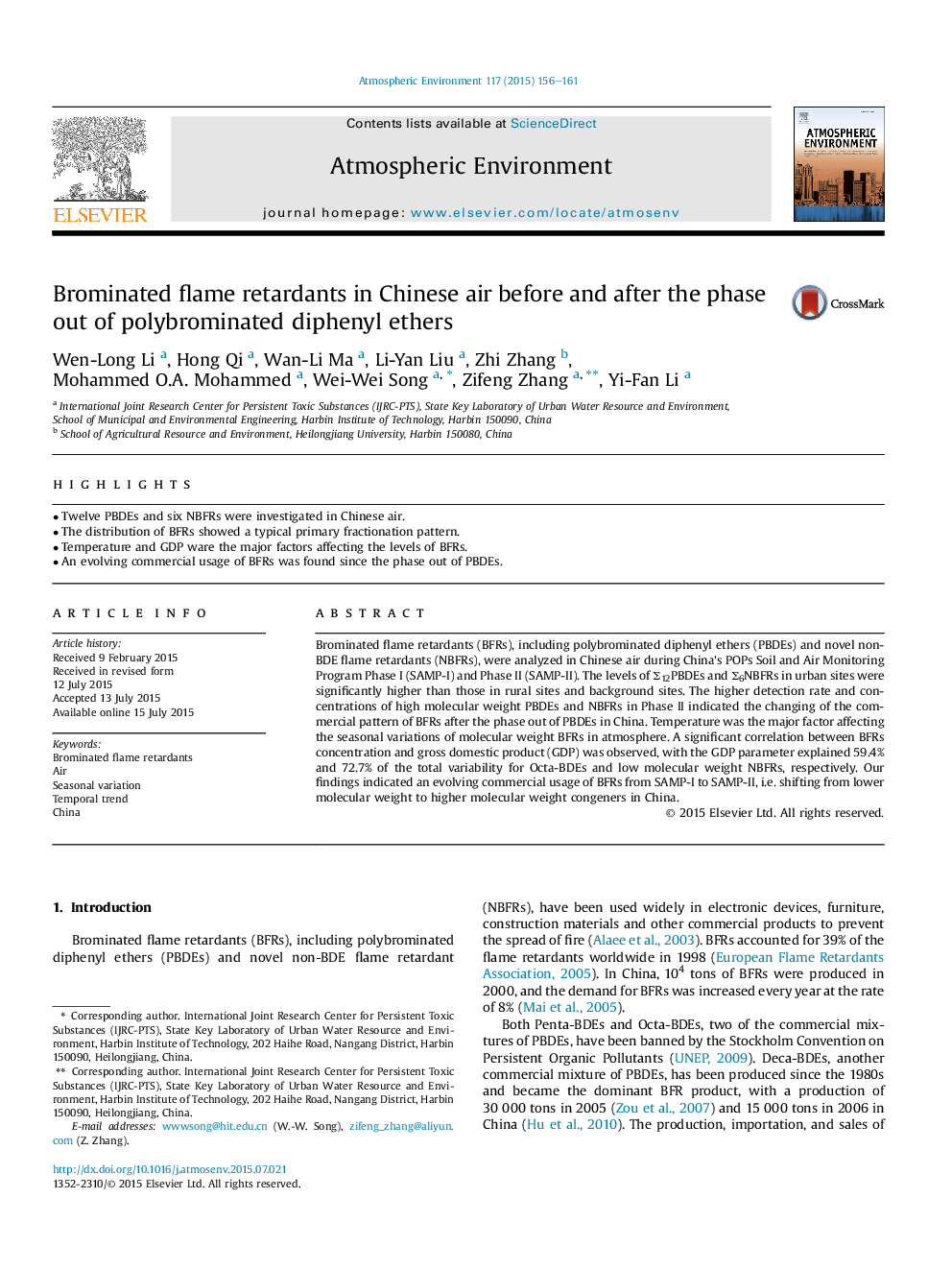| Article ID | Journal | Published Year | Pages | File Type |
|---|---|---|---|---|
| 6337733 | Atmospheric Environment | 2015 | 6 Pages |
Abstract
Brominated flame retardants (BFRs), including polybrominated diphenyl ethers (PBDEs) and novel non-BDE flame retardants (NBFRs), were analyzed in Chinese air during China's POPs Soil and Air Monitoring Program Phase I (SAMP-I) and Phase II (SAMP-II). The levels of Σ12PBDEs and Σ6NBFRs in urban sites were significantly higher than those in rural sites and background sites. The higher detection rate and concentrations of high molecular weight PBDEs and NBFRs in Phase II indicated the changing of the commercial pattern of BFRs after the phase out of PBDEs in China. Temperature was the major factor affecting the seasonal variations of molecular weight BFRs in atmosphere. A significant correlation between BFRs concentration and gross domestic product (GDP) was observed, with the GDP parameter explained 59.4% and 72.7% of the total variability for Octa-BDEs and low molecular weight NBFRs, respectively. Our findings indicated an evolving commercial usage of BFRs from SAMP-I to SAMP-II, i.e. shifting from lower molecular weight to higher molecular weight congeners in China.
Related Topics
Physical Sciences and Engineering
Earth and Planetary Sciences
Atmospheric Science
Authors
Wen-Long Li, Hong Qi, Wan-Li Ma, Li-Yan Liu, Zhi Zhang, Mohammed O.A. Mohammed, Wei-Wei Song, Zifeng Zhang, Yi-Fan Li,
